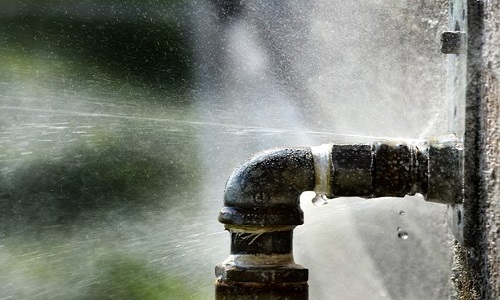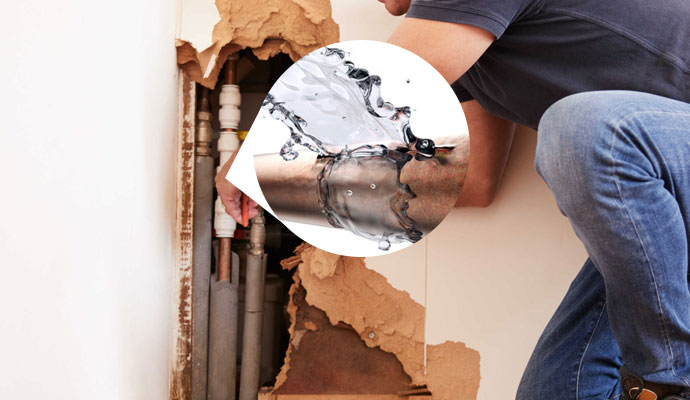The Complete Guide to Septic Tank Maintenance: What You Need to Know
The Complete Guide to Septic Tank Maintenance: What You Need to Know
Blog Article
The article author is making a few great pointers regarding Do’s And Don’ts For Homeowners Managing With Water Damage in general in this article down the page.

What should you do if a pipes bursts in your house? Do you want a mini-waterfall as well as flooding in an area of your residence? You must act fast if you locate yourself in this circumstance. The longer you wait, the much more serious the damages that can occur to your building. The presence of mind is type in these occasions. For these reasons, you need to discover exactly how to act in case of a ruptured pipes. Have a look at the complying with ideas listed below to aid you act quickly due to the fact that time is important.
Turn off the Key Waterline Shutoff
The first thing to do? Shut the shut-off shutoff. Seek the neighborhood shut-off shutoff to switch off the water in one specific location just. If you do not recognize where the local shut-off shutoff is, choose the primary water line valve and turn it off. This action will certainly remove the water quickly in your entire home. Normally, the primary valve is discovered outside the home next to the water meter. If it's not there, you can also find it in 2 areas: in the cellar at eye degree or the 1st floor on the ground. Generally, contractors put the shut-off valve generally ground degree shower room or ideal beside it.
Call Water Damages Repair Pros for Help
After shutting the water resource, call the experts for assistance. Because the pipelines needed to be fixed and also there is a requirement to address the various other damages to your property, this circumstance is not something you can do some DIY. If you can not deal, seek help from a trustworthy business offering 24/7 emergency solutions. With their expert aid, you can avoid a lot larger water damages consisting of warped walls, loose ceramic tiles, or damaged frameworks. Don't take this issue gently and look for specialist assistance for your full peace of mind as well as a credible service.
Record the Damage For Insurance coverage
While you're waiting for the pros to show up, obtain some documents of the damages created by the wayward pipeline. Do close-up shots of the harmed spots and valuables.
Salvage Things That Can Be Saved
Analyze the damaged items and take out the most important ones from the stack as soon as you're done taking images. Dry them off in a dry/warm area far from the broken location as well as try to protect them as long as you can. Drag as much moisture as you can to the material so it can start to dry.
Beginning the Drying Refine
The good news is, the water from your waterlines is already tidy so you don't have to worry regarding sewer water. The streaming water may have disrupted the dirt and particles in your floorboards and also carpets. Blot out as much water as you can from the surface areas with old towels.
Specialists are the only people certified to assess properly as well as fix the burs pipes as well as succeeding damages. As always, pipes do not simply suddenly burst out of the blue. They normally offer silent red flags like bubbling paint, water spots. Unusual noises in the plumbing, caving ceiling, musty smell, or peeling wallpaper. Remember of these indicators and do some preventive measures so you can nip any kind of concerns in the bud.
What should you do if a water pipeline ruptureds in your house? For these reasons, you require to find out how to act in the event of a ruptured water pipeline. After shutting the water source, call the specialists for help. With their expert help, you can avoid a lot larger water damage consisting of deformed baseboards, loosened floor tiles, or damaged structures. The good news is, the water from your waterlines is already clean so you do not have to stress about drain water.
How to Handle a Burst Pipe and Minimize Damage
Steps to Take Ahead of Time
If you own property in an area that experiences cold weather, you need to be aware of seasonal maintenance tasks that will help you protect your property as the weather changes each year. One of the most important steps is to winterize your pipes to ensure they won't freeze or burst when the temperature drops. This includes action items like insulating any exposed pipes, detaching garden hoses and covering outdoor faucets. If the weather gets cold enough, you may even consider leaving a faucet dripping or opening cabinet doors during the coldest parts of the day.
No matter how prepared you might be, accidents and emergencies still happen. You'd be wise to set up a savings account specifically for your property so you have a "rainy day" fund set aside for unexpected expenses. All homes—regardless of age, location or condition—will inevitably need some form of emergency repair.
Steps to Take for Frozen Pipes
A frozen pipe will not necessarily burst, so if you can catch a frozen pipe early on, you could save yourself a major headache. When your area experiences frigid temperatures, be sure to check your plumbing and keep an eye out for warning signs like faucets only releasing small amounts of water or toilets not refilling when flushed. If you do run into one of these issues, you're likely dealing with a frozen pipe.
If this happens, your first step should be to cut off the water supply to that section of the plumbing. Expanding and freezing water can quickly cause damage. Even if the water supply is shut off, you will likely still deal with some leaking from the water that defrosts after the pipe has thawed. Be prepared with a mop, bucket and/or towels to quickly soak up any excess water.
In order to thaw a frozen pipe, you can use a space heater, infrared or incandescent heat lamp, or even a hairdryer to warm up the frozen area. Heat tape is also an option and should be used according to manufacturer instructions. Do not use any sort of open flame to thaw frozen pipes, as it poses a major fire hazard and can damage your pipes further.
Steps to Take for a Burst Pipe
Water damage claims are the second most common insurance claim in the U.S. When you're dealing with a frozen pipe, the water continues to expand as it freezes, which creates pressure that can cause a pipe to burst. When this happens, the crack or leak in the pipe allows water flow from the pipe to enter your home where it shouldn't. If a pipe does burst, you need to act quickly to mitigate property damage and repair cost.
Your very first step should be to shut off your main water supply to minimize flooding—typically the most expensive damage to address. Once you've shut off the water supply, make sure you identify the entire area that has been impacted by the leak. Remove as much water as possible—as quickly as possible—using a mop, sponges, towels or a shop vacuum or wet/dry vacuum. To prevent long-term damage due to moisture build-up, run a dehumidifier or fan in the affected area. Contact a licensed plumber to ensure the pipe is correctly repaired before running any water to that section of the home again. Burst pipes and the associated water damage are something you absolutely want to avoid as a property owner. If you've had to learn your lesson the hard way, don't let yourself get caught in a similar situation during the next spell of cold weather. The best way to deal with frozen or burst pipes is to prevent them in the first place—proactive winter maintenance will save you time, money and a whole lot of stress.

We were made aware of that report about Rules For Handling Water Damage from a good friend on another web blog. For those who liked our blog post if you please be sure to share it. Thanks for your time. Please come by our site back soon.
Report this page